Nursing Interventions & Clinical Skills, 6th Edition by Anne Griffin Perry -Test Bank
Chapter 05: Infection Control
Perry et al.: Nursing Interventions & Clinical Skills, 6th Edition
MULTIPLE CHOICE
1. The patient is in isolation in a negative-pressure room for active tuberculosis. He coughs and spews large amounts of blood-tinged sputum but is too weak to cover his mouth and nose with a tissue. Which is the most important intervention for the nurse to implement for self-protection while providing nursing care?
|
a. |
Cover the patient’s mouth and nose snugly with a surgical mask. |
|
b. |
Wear an N-95 mask, gloves, face shield, and isolation gown. |
|
c. |
Place tissues and a contaminated waste container within reach. |
|
d. |
Use a properly fitted surgical mask and gloves to help with tissues. |
ANS: B
Wearing suitable protective barriers is the most important intervention to implement because it protects the nurse from the airborne particles and the pathogens that can land on surfaces from droplets of the patient’s coughing. The nurse wears a mask suitable for airborne precautions to prevent inhalation of suspended Mycobacterium tuberculosis in the air and gloves, gown, and goggles to protect clothing and mucous membranes from contact with body fluids because of the patient’s poor hygiene due to his weakened state. Respirator masks are used in airborne precautions because these masks filter what the wearer inhales. The patient should wear a mask if he or she must leave the room because a surgical mask controls what the wearer exhales; a mask for the patient is not indicated in the isolation room. The nurse can inhale airborne particles through the pores of a surgical mask, regardless of how well it fits, because a surgical mask controls what is exhaled.
DIF:Cognitive Level: AnalyzeREF:Page 84
OBJ: NCLEX: Safe and Effective Care TOP: Nursing Process: Implementation
2. The nurse is caring for several patients under contact precautions. Which option is possible for the nurse to use if two of her patients have “like” infections?
|
a. |
Double gloving |
|
b. |
Single gloving |
|
c. |
Cohorting |
|
d. |
Hand sanitizer only |
ANS: C
When a hospitalized patient has an infection, a nurse decides on the optimal room placement to minimize the chances of infection spreading to other patients. Two patients with “like” infections can be placed in the same room; this is called cohorting.
Double gloving is used during procedures to make it easier to remove one pair. Hand sanitizer is not effective against Clostridium difficile (“C. diff”) or when hands are visibly soiled.
DIF:Cognitive Level: ApplyREF:Page 76| Page 83
OBJ: NCLEX: Safe and Effective Care TOP: Nursing Process: Implementation
3. The nurse bathes a patient who has an infection transmitted by the oral-fecal route such as C. diff and notes a small tear in one glove. Which group of interventions does the nurse use for self-protection?
|
a. |
Finish the bath, apply fresh gloves, and use hand sanitizer. |
|
b. |
Continue the bath and change gloves when finished. |
|
c. |
Apply a new glove over the torn one to finish the bath. |
|
d. |
Remove the gloves, wash hands, and apply new gloves. |
ANS: D
For self-protection the nurse interrupts the bath to avoid additional exposure to a potential pathogen by removing the gloves, washing both hands with soap and water, and applying fresh gloves for protection against exposure so the nurse can finish the bath. The nurse risks infection by continuing the bath with a portal of entry on the glove. The nurse should perform hand hygiene before applying fresh gloves. Hand sanitizer is not effective with C. diff. Applying clean gloves over the torn gloves encases the potential pathogens and increases the risk of exposure to the pathogen.
DIF:Cognitive Level: ApplyREF:Page 76
OBJ: NCLEX: Safe and Effective Care TOP: Nursing Process: Implementation
4. A patient is in isolation in a negative-pressure room for tuberculosis, and the nurse notes that the respirator mask is damaged slightly. What is the initial action that the nurse should take?
|
a. |
Ask to switch the assignment. |
|
b. |
Check the mask for a tight seal. |
|
c. |
Borrow a mask from a co-worker. |
|
d. |
Use the mask if damage is minor. |
ANS: B
Before using the mask to enter the patient’s room, the nurse checks the fit to ensure a tight seal because the purpose of this mask in airborne precautions is to filter inhaled air and thereby protect the nurse against pathogens suspended in the air. The nurse can use the mask if the damage is minor and does not affect the seal. Co-workers do not share respirator masks because each employee is fitted individually. If the mask seal is affected, a new mask will be required. Switching assignments is not an appropriate request.
DIF:Cognitive Level: UnderstandREF:Page 84
OBJ: NCLEX: Safe and Effective Care TOP: Nursing Process: Planning
5. The nurse completes care for the patient on droplet precautions. Which procedure does the nurse implement to prevent transmitting the pathogen to other people?
|
a. |
Removes gloves and mask at the bedside and gown in hallway |
|
b. |
Removes all personal protective equipment (PPE) in the soiled utility room |
|
c. |
Removes gloves first, gown second, and mask third in the patient’s doorway |
|
d. |
Removes mask first, gloves second, and gown third outside the patient’s room |
ANS: C
The nurse removes PPE to prevent self-contamination. He or she removes the gloves first to avoid contaminating the head, then removes the gown by unfastening neck ties and pulling it away and rolling into a bundle, then removing mask. These actions occur in the patient’s doorway to contain the pathogen and prevent transmission to people outside the room. The nurse risks contamination if the gloves and mask are removed at the bedside; if the mask is removed before the contaminated gloves, the nurse risks contaminating the head while untying the strings of the mask. PPE should be removed together, at the same location, and away from the source of contamination to facilitate containment of the pathogen. Removing PPE in the hallway or utility room would risk transmitting the pathogen to others.
DIF:Cognitive Level: ApplyREF:Page 87
OBJ: NCLEX: Safe and Effective Care TOP: Nursing Process: Implementation
6. A patient on isolation precautions tries to leave the isolation room because of loneliness despite repeated instructions to remain in the room. Which action should the nurse implement as a patient advocate?
|
a. |
Allow visitors to remove masks while in the patient’s room. |
|
b. |
Talk with the patient about ways to reduce the sense of loneliness. |
|
c. |
Remind the patient that the isolation is for the patient’s benefit. |
|
d. |
Leave the door open slightly so the patient can see into hallway. |
ANS: B
The nurse sets specific times to remain in the patient’s room as a patient advocate to help him or her develop coping strategies for handling the loneliness of isolation and provide periodic company. Visitors should not enter the room without a properly fitted respirator mask for their protection. The nurse can remind the patient about the purpose of isolation to help him or her understand the plan of care. The door cannot remain ajar because the risk of transmitting the infection is increased with the door open.
DIF:Cognitive Level: ApplyREF:Page 75
OBJ: NCLEX: Safe and Effective Care TOP: Nursing Process: Planning
7. Gloves are effective protective barriers from pathogens when caring for patients in isolation. Which patient factor associated with the gloves should the nurse investigate for patients in isolation?
|
a. |
Patient resistance to therapy |
|
b. |
Transmission mode of organism |
|
c. |
Patient potential for latex allergy |
|
d. |
Virulence of infectious organism |
ANS: C
The patient potential for latex allergy is the most important patient factor related to using gloves with patients in isolation. Allergic reactions to latex may be triggered even if latex does not touch the patient. Wear unpowdered latex-free gloves. Several alternatives to latex gloves exist. If the patient is allergic to latex, the nurse can use nonlatex gloves to prevent hypersensitivity reactions. Neither virulence nor transmission mode of a pathogen is a patient factor.
DIF:Cognitive Level: UnderstandREF:Page 84
OBJ: NCLEX: Safe and Effective Care TOP: Nursing Process: Assessment
8. The nurse is getting ready to provide a sterile dressing change. Which nursing action is consistent with principles used to prepare a sterile field?
|
a. |
Identify that items below waist height are contaminated. |
|
b. |
Use opened packages of dressing supplies within the same shift. |
|
c. |
Identify that sterile drapes have a 5.08 cm (2-inch) contaminated border. |
|
d. |
Replace bottle caps if the inside of the cap is not touched. |
ANS: A
Items below waist level are considered contaminated and are discarded quickly to avoid contaminating the rest of the sterile field. Packages of sterile supplies must be sealed to be considered sterile. Sterile drapes have a 2.54 cm (1-inch) perimeter that is considered contaminated. Replace bottle caps if the inside of the cap and the edge of the bottle remain sterile.
DIF:Cognitive Level: UnderstandREF:Page 90
OBJ: NCLEX: Safe and Effective Care TOP: Nursing Process: Assessment
9. The nurse teaches the patient the proper handwashing technique before discharge and asks for a return demonstration. Which hand hygiene technique indicates that patient teaching by the nurse is effective?
|
a. |
The patient washes hands with running water. |
|
b. |
Soap, water, and friction are used by the patient. |
|
c. |
The patient washes hands with very hot water. |
|
d. |
A basin with warm soapy water is used. |
ANS: B
The patient understands that proper handwashing requires soap, water, and friction to remove microorganisms from the skin and rinse them away. Running water is insufficient to wash hands properly because water alone cannot remove as many microorganisms as soap and water can remove. The patient risks tissue damage, dry skin, and irritation from hot water. Washing hands in a basin may remove surface debris, but the hands are not decontaminated because the debris remains in the rinse water.
DIF:Cognitive Level: ApplyREF:Page 78
OBJ: NCLEX: Safe and Effective Care TOP: Nursing Process: Evaluation
10. The nurse cared for a patient diagnosed with tuberculosis (TB) 3 days ago. Which of the following actions should the nurse implement in response to the potential exposure?
|
a. |
Take a leave of absence. |
|
b. |
Have a chest x-ray taken. |
|
c. |
Request a sputum culture. |
|
d. |
Get a QFT-G blood test. |
ANS: D
The CDC now recommends the QuantiFERON-TB Gold (QFT-G) blood test to determine the presence of TB antibodies followed by a sputum test or a chest x-ray to confirm the presence of Mycobacterium tuberculosis. A leave of absence is not necessary unless the nurse displays clinical indicators of TB such as fever, night sweats, weight loss, and coughing.
DIF:Cognitive Level: ApplyREF:Page 84
OBJ: NCLEX: Safe and Effective Care TOP: Nursing Process: Planning



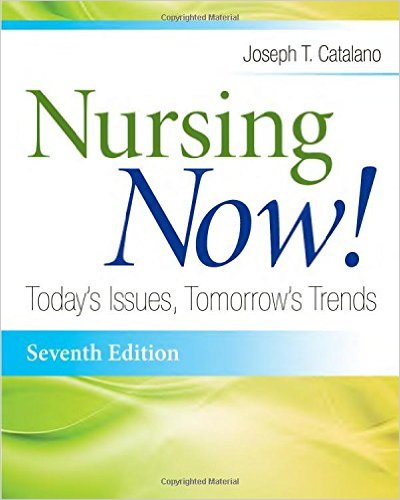


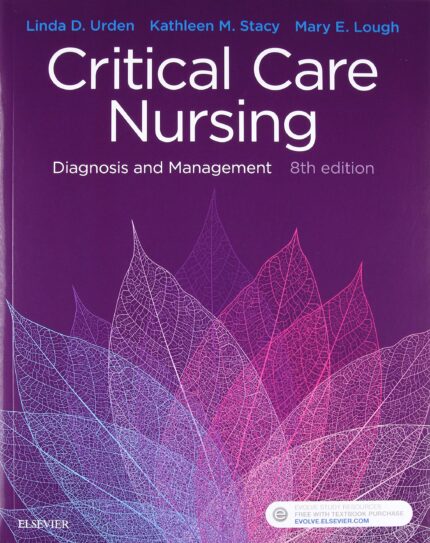


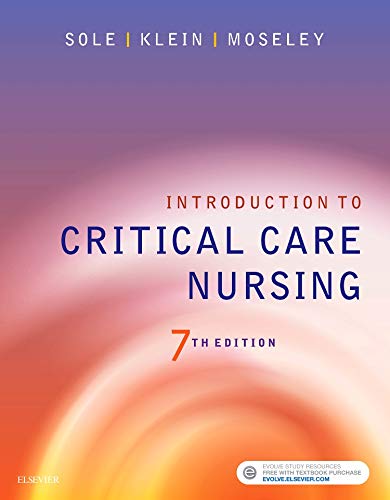

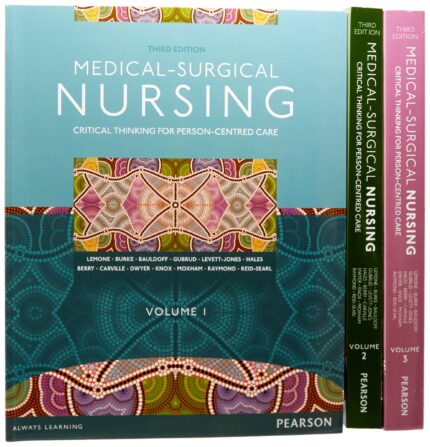

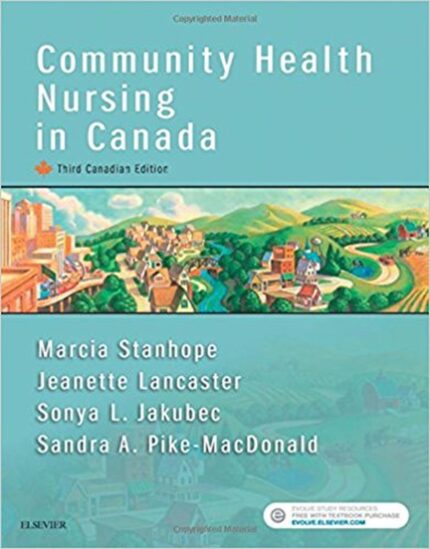
Reviews
There are no reviews yet.